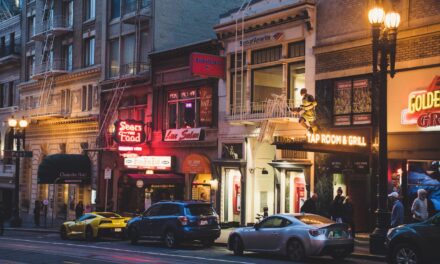Name: Ken Anderson
Kennel: Windy Creek Kennel
Birthplace: Grand Rapids, Minnesota, USA
Current Residence: Fairbanks, Alaska, USA
Occupation: Dog Musher
Email: NA
Website: Windy Creek Kennel
Introduction To Our Musher
I was exposed to mushing as a child in Minnesota where my parents had a recreational team of a few Malamutes. We took winter camping trips to the BWCA which were the highlights of my childhood. My father bought me a picture book on the Iditarod and I made it my life’s goal to someday run the race. I accomplished that goal in 1999, finishing the race in 29th place. Now my new goal is to win.
The Background of Our Musher
How did you get involved with the sport of dog sledding?
See above.
Could you tell us about your first mushing adventure?
Well, my mother still tells stories about changing my diapers in -30 degree temperatures on these winter camping trips.
Who have been your biggest supports during your mushing years?
I handled for many top racers before starting my own kennel but I would have to say my mentor was Arleigh Jorgensen, who was the first musher I handled for. I also met my future wife, Gwen Holdmann, while working for Arleigh. Gwen now is by far my biggest supporter in mushing.
How long have you been addicted to mushing?
For as long as I can remember.
What has been your greatest accomplishment in your dog sledding career?
I think finishing the Iditarod in 5th place is my biggest accomplishment. I also hold a lot of nostalgia for the Yellowknife race, which was my mentor’s favorite race and another race I someday wanted to run myself. Winning that in 1998 was a milestone for me as well.
What is it about dog sledding that makes you enjoy it so much?
Watching the dogs develop into a member of a well-gelled team. Of course, the peak of that is seeing them perform their best in a race.
Maintaining a Kennel
How is your kennel set up?
Like a standard kennel. Nothing to special.
How many lucky dogs currently enjoy your kennel?
About 80. That includes all the retirees, yearlings, and pups, as well as the race dogs. This year we are training about 30 dogs that are two or older.
What is the feeding routine for your dogs?
Redpaw year-round. We add some beef or horse in the winter and corn oil if it’s cold. Psyllium and bonemeal are the only supplements to our diet. It’s pretty basic, but it’s worked quite well. Our team rarely gets sick and the dogs hold their weight well. It’s an excellent, simple diet.
What is your kennel philosophy?
You’re only going to get out what you put in to the dogs. Don’t expect a great performance out of your dogs if you’re having someone else do all the training and care of the dogs. I treat dogs like people as much as possible.
What is important to you when maintaining a kennel of working dogs?
Making sure the dogs trust and like you. The leadership the musher displays is oftentimes overlooked. I know this from good personal performances and efforts, as well as half-hearted attempts. When things get tough, the team needs strong leadership from their driver, as well as (hopefully) a superstar lead dog or two.
If I were a dog in your kennel, what would my day be like?
I hate schedules and don’t keep one for more than a few months.
Working With the Dogs
What physical attributes do you try and produce in one of your average sled dogs?
I know some mushers focus on heart and drive. I would tend to lean towards focusing on a dogs physical abilities first and foremost. I’ve had average-gaited dogs do okay in my team, but their career is usually shortened by their lack of physical talents. Obviously you want a dog that has a beautiful gait and a wonderful attitude to compliment it. Attitude is something that’s pliable that can be worked with, but raw athleticism is something a dog either has or doesn’t have. I believe you should focus on that as your base, rather than heart and drive.
What breeds do you currently mush with?
I am basically breeding my own dogs right now, other than the occasional breeding outside my kennel. Our dogs go back to three dogs: Oreo, who was an excellent stage leader for us that seems to throw a beautiful body and leadership, Izzy, who was also a tough, smooth leader, and Raymond Cook’s Tetley, which was the foundation of his kennel. I also just bred one female to Mike. She had seven pups that all look pretty nice (they’re currently yearlings). The hounds definitely have a different demeanor about them and I’m reserving judgment about them, although I did breed one of the females back to my line to get 1/8th’s.
What is the demeanor like in all of your sled dogs?
They’re very mellow and business-like, which I like. I think harness-bangers are just plain dangerous and are usually mentally detached from the rest of the team and are the first ones to give-out when the going gets tough. I like the dogs focusing on me and the rhythm of the team of dogs their in, rather than hitting the harness and being obnoxious.
Please describe your vision of the perfect sled dog.
A perfect sled dog would be one with a smooth gait that trots around 11 miles per hour and then transitions into a nice, smooth lope. I don’t like pacers, but I’ve seen them still finish races with a tight line. I like a dog that’s flexible, which usually lends itself to shorter recovery time. I would also have to say I’m prejudice against white dogs, especially if they have blue eyes. They always seem high-strung and scared of their surroundings. The few dogs I’ve been on the receiving end of a fear bite were white, blue-eyed dogs.
The Magical World of Puppies
How do you house your puppies?
I think the house has to be big enough for them and their mother to be comfortable, which usually means a house about twice the size of a standard house.
During the first months of a puppy’s life, what is their training like? What do you work on with them?
During the first month I don’t do much other than spending as much time as I can with them. When they’re around six weeks old we’ll start going on puppy walks loose with the mother. I make try to get them to listen when they’re called. When they come running up to us I praise them and make it fun, but try not to overdo it.
What do you look for in your breeding pair?
Right now I’m doing some fairly tight breeding to try and isolate the characteristics better that I want. My dogs are fairly uniformly built now and I don’t have to be as picky about who I breed to who to get nicely-gaited pups. With this tighter breeding I think I’ll be able to better breed dogs that will produce what we’re all looking for; a smooth dog with a lot of drive and work ethic with great recovery time.
What is your favorite part about raising puppies?
Puppy walks.
Training: The Hard Part
What is your way of thinking when it comes to racing and training?
I believe in bringing a well-conditioned dog to the starting line. I’ve done this fairly well for the stage races but have probably fallen a little short for Iditarod. We’re so busy running around the countryside having fun at stage races that we don’t get in enough long runs in before Iditarod to put us into the “contender” category. Hopefully that will change this year. A well-conditioned dog, though needs leadership from its musher to take it to the next level in a race. It’s important to have a plan, stick to it with confidence, visualize success, and then give everything you’ve got to make that happen. You don’t have to win to feel like a champion. Sometimes you’re just out-gunned, but if you get a top-notch performance out of yourself and your dogs, that’s all you can ask for.
Could you describe your yearly training program?
I try to keep the dogs exercised all season long. This summer I gave dog rides all summer, which I had also done in prior years. If I’m not doing that I like to loose run the dogs at least twice a week. I usually start training around mid to late August doing slow miles focusing on muscle tone and work ethic. If you’re going slow, there’s no excuse for the dog not to be pulling. I build the mileage gradually and steadily until I hit about the 40-mile mark. Then I do some speed work, where I have to truck the dogs to flatter trails. This year I’m going to do pyramid intervals similar to Lloyd Gilbertson’s workout regime. By December I want to do long camping trips interspersed with speed work and some really slow, short (under 20 miles) grinding work. I would like to train my Iditarod team to handle 80-100 mile straight runs this year. I believe this is what separates the very top Iditarod mushers from the rest of the pack; they’re dogs are simply better-conditioned.
What tools are most important to you when training your sled dogs?
The brake.
What are your training goals each year?
They seem to change year to year as I learn other techniques from other mushers.
Racing: Oh Glorious Racing!
Do you race? If so, what races?
Anything where I think I can win some money or give our kennel some exposure. Our race choices are usually dictated by where we think we can win the most money.
What are your goals during the racing season?
To make as much money as possible first, and to travel and meet new people and see new country second.
Could you tell us about your first race?
My first race was the Esslinger Classic that I ran with Bob Somers’ dogs. I recall being quite humbled in that race.
How do you decide which dogs make the race team?
I make sure I don’t take dogs that I think may wind up in my basket, even if they’re great performers.
If you could, what are your racing strengths and weaknesses?
Some of my strengths are also my weaknesses; Patience, a solid, yet conservative pre-race conditioning program. One strength is that I think I can get a lot out of my dogs, problem is sometimes I procrastinate.
How do you decide which races you will be entering during the racing season?
Gwen and I pick races we want to personally participate in and try to justify it somehow financially.
What has been your most memorable racing experience?
I think I have several, but nearly winning the 2003 Atta-Boy with our string was one of my personal best performances. I didn’t have a lot of pressure on me because Gwen was more in the spotlight, running our best dogs. I just laid it all out on the line and got a lot out of the dogs.
What Does the Future Hold?
What do you hope to accomplish with the dog sledding sport?
Somehow get wealthy with dog mushing.
What changes do you hope dog sledding makes in the near future?
I think it will flow wherever the public perception of mushing flows. Right now, with the new movies out, things are pretty good. However, mushing needs a new poster child, especially with the loss of Susan Butcher. Rachael Scdoris may fill that role for us.
To the beginning musher, what advice would you give?
If you’re serious about racing don’t get into mushing by taking all of your mentor’s retired dogs; breed your own.
If mushers were to do something to perpetuate the dog sledding sport, what would that be?
Appeal to the masses.





